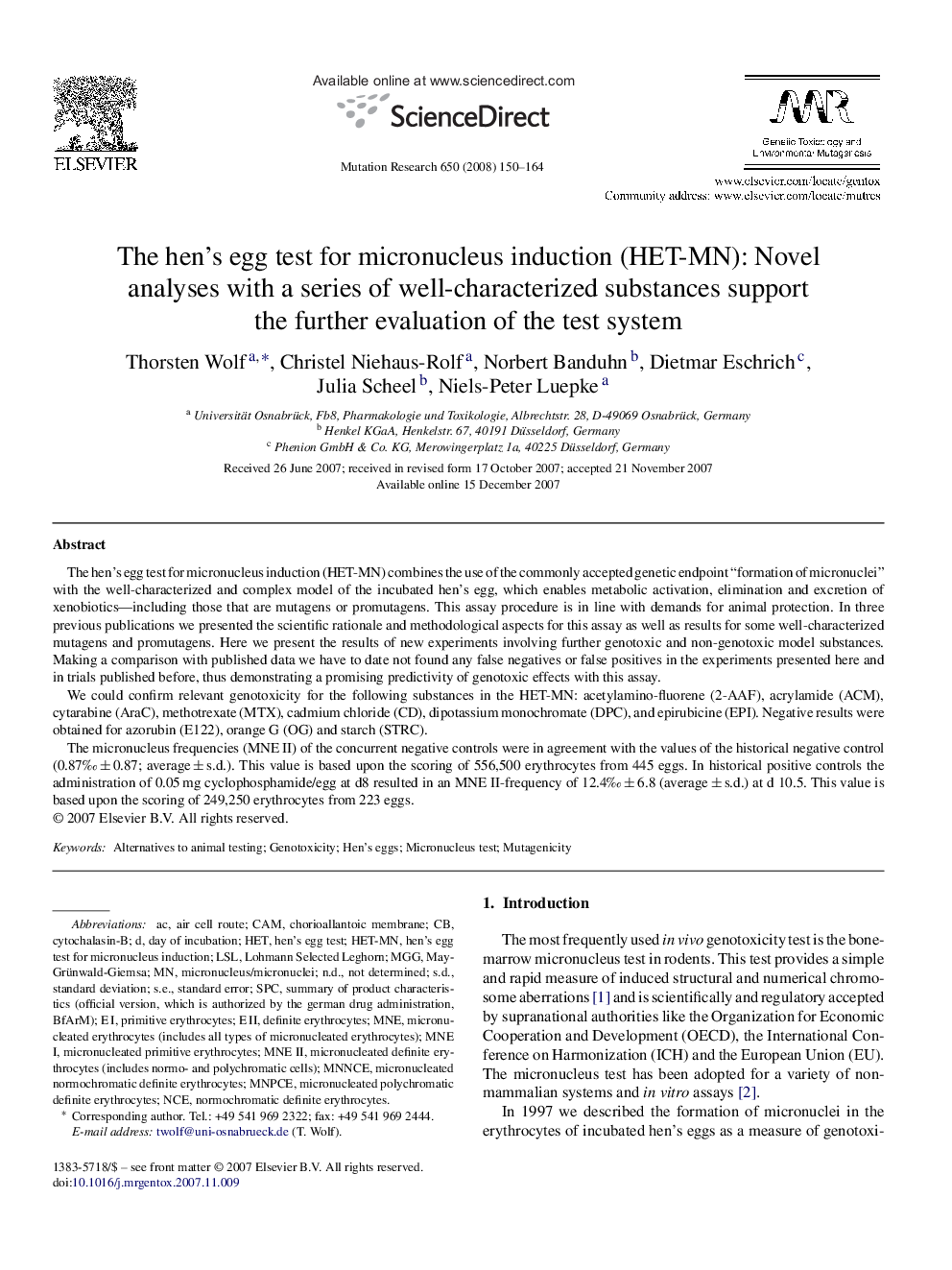| کد مقاله | کد نشریه | سال انتشار | مقاله انگلیسی | نسخه تمام متن |
|---|---|---|---|---|
| 2149009 | 1548636 | 2008 | 15 صفحه PDF | دانلود رایگان |

The hen's egg test for micronucleus induction (HET-MN) combines the use of the commonly accepted genetic endpoint “formation of micronuclei” with the well-characterized and complex model of the incubated hen's egg, which enables metabolic activation, elimination and excretion of xenobiotics—including those that are mutagens or promutagens. This assay procedure is in line with demands for animal protection. In three previous publications we presented the scientific rationale and methodological aspects for this assay as well as results for some well-characterized mutagens and promutagens. Here we present the results of new experiments involving further genotoxic and non-genotoxic model substances. Making a comparison with published data we have to date not found any false negatives or false positives in the experiments presented here and in trials published before, thus demonstrating a promising predictivity of genotoxic effects with this assay.We could confirm relevant genotoxicity for the following substances in the HET-MN: acetylamino-fluorene (2-AAF), acrylamide (ACM), cytarabine (AraC), methotrexate (MTX), cadmium chloride (CD), dipotassium monochromate (DPC), and epirubicine (EPI). Negative results were obtained for azorubin (E122), orange G (OG) and starch (STRC).The micronucleus frequencies (MNE II) of the concurrent negative controls were in agreement with the values of the historical negative control (0.87‰ ± 0.87; average ± s.d.). This value is based upon the scoring of 556,500 erythrocytes from 445 eggs. In historical positive controls the administration of 0.05 mg cyclophosphamide/egg at d8 resulted in an MNE II-frequency of 12.4‰ ± 6.8 (average ± s.d.) at d 10.5. This value is based upon the scoring of 249,250 erythrocytes from 223 eggs.
Journal: Mutation Research/Genetic Toxicology and Environmental Mutagenesis - Volume 650, Issue 2, 29 February 2008, Pages 150–164